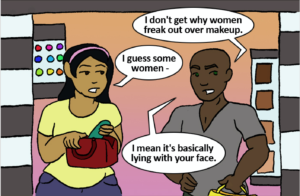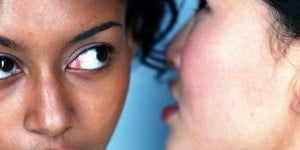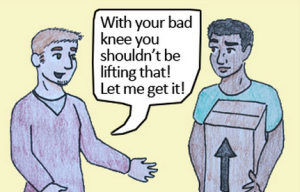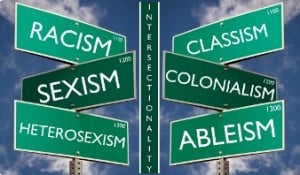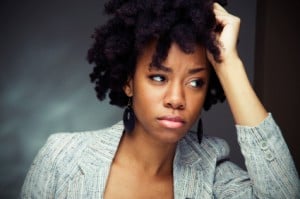
Source: Healthy Black Woman
Originally published on Proud2BMe and cross-posted here with their permission.
Conversations surrounding eating disorders, body image, and beauty standards are generally centered on the narratives of straight, cisgender women.
However, these conversations often exclude the experiences of many LGBTQIA+ people who also struggle with body image concerns and disordered eating.
We – as individuals and as a community – have unique needs and concerns, and we often face a multitude of barriers in terms of accessing treatment and feeling at home in a recovery community that should include us, and yet often doesn’t.
It’s necessary especially to highlight the experiences of transgender individuals, as we are both a minority within the larger population and within the LGBTQIA+ community, and so our narratives tend not to be told.
The struggles of trans individuals with eating disorders are two-fold: 1) Recovery is often complicated by the internal experience of being trans, and 2) it is made more difficult due to lack of access to healthcare and supportive communities.
Many (but not all) trans individuals experience gender dysphoria, which is a feeling of dissatisfaction or discomfort between the gender you were assigned at birth and the gender you are.
This dissatisfaction with one’s body and how other people perceive one’s body is often in direct opposition to trying to overcome one’s eating disorder, especially for those who also suffer from body dysmorphia.
Even when a trans individual overcomes body dysmorphia, they may still suffer from gender dysphoria that still dictates how they perceive their body and how they would like their body to be.
Another barrier is the way in which cisnormative body ideals and beauty standards are idealized.
Those who break gender norms are not typically viewed in a positive light, and this has a negative effect on trans individuals in particular. The pressure to “pass” as cisgender can be especially destructive to those who already hold negative feelings towards themselves and their bodies.
In addition to feelings of discomfort regarding one’s body – and additional pressures from various communities to conform to a set standard of traditional beauty – transgender individuals face many barriers in terms of accessing treatment and finding community.
Trans individuals face high rates of homelessness and poverty, and they’re even more likely to be homeless or to live in poverty if they are transfeminine or non-white. In addition, many trans people lack support from their families.
This means that trans individuals are less likely to have the means to afford treatment for their eating disorders, as well as for any healthcare related to being trans.
Many trans individuals are also distrustful of medical institutions that have consistently failed them, and so are less likely to reach out for help even when possible. Additionally, even when trans individuals can and do access treatment, it often is not sensitive to their unique needs as trans people with eating disorders.
Because the barriers facing trans individuals with eating disorders are complex and multifaceted, the solutions are complex and multifaceted, as well.
First, we – as individuals, as a community, and as a culture – need to accept and celebrate all bodies.
This means rejecting cisnormative body and beauty standards as the ideal and recognizing beauty regardless of gender expression or identity. It also means combatting fatphobia and body shaming in the recovery community and in the LGBTQIA+ community and recognizing beauty regardless of size.
It also means not valuing beauty above all else. We need to recognize our own worth and each other’s worth for more than our outward appearances.
Second, we need to validate the need for some transgender people to change their bodies.
Due to gender dysphoria, some trans individuals are not able to simply love and accept their bodies, even after recovering from an eating disorder.
For some of us, our eating disorders are inherently tied to our experiences as trans individuals, and full recovery from an eating disorder may not be possible until we also are given the means to change the way our bodies appear (through access to hormones, surgery, and so on) so that we may better affirm our genders.
Finally, we must increase access to healthcare and to inclusive, affirming spaces.
As transgender activist and actress Laverne Cox stated at 2014’s Creating Change Conference, “Healthcare for trans people is a necessity. It is not elective… it is lifesaving.”
In order for trans people to flourish, we need healthcare that enables us to express our genders in the way that is best for us. And for those of us that have eating disorders, we need healthcare that addresses our intersections of identity and experiences in a way that is also respectful, humanizing, and validating.
Additionally, we need to create a recovery community where people of all gender expressions and identities are affirmed and valued.
These are not quick fixes, but they are vital ones.
Transgender people exist, and we need and deserve to have our stories told, to find support and community, and to have access to treatment that is sensitive to our unique experiences.
Check out this Google+ Hangout, “MarginalizED Voices: Speaking Up for Change in Eating Disorders Awareness, Outreach, and Treatment” – which features Trans Folx Fighting Eating Disorders – for more information.
***
To learn more about this topic, check out:
- 6 Ways to Reconcile Your Eating Disorder with Your Feminism
- 10 Things I Wish People Understood About Eating Disorders
- 5 Ways to Support a Loved One in Eating Disorder Recovery
- 5 Common Questions About Eating Disorder Recovery Answered
[do_widget id=”text-101″]
Aaryn Clerk is a queer and trans student at Boston University studying English Education and minoring in Women’s, Gender, and Sexuality studies. They coordinate with other activists on campus through BU’s Center for Gender, Sexuality, and Activism to address the needs of marginalized students. They have been in recovery from EDNOS for one year.
Search our 3000+ articles!
Read our articles about:
Our online racial justice training
Used by hundreds of universities, non-profits, and businesses.
Click to learn more
Most Read Articles
- « Previous
- 1
- …
- 30
- 31
- 32














